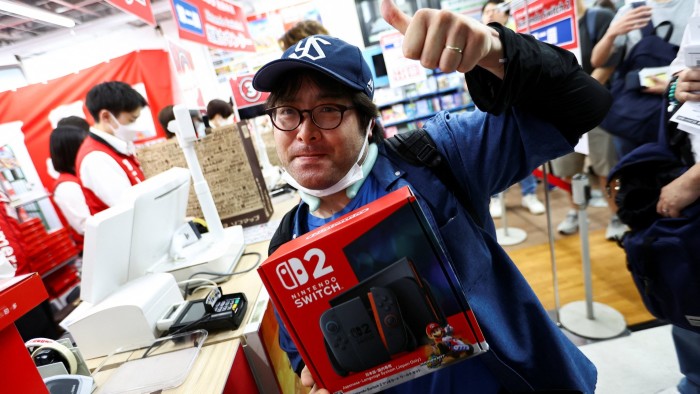Unlock the Editor’s Digest for free
Roula Khalaf, Editor of the FT, selects her favourite stories in this weekly newsletter.
Long queues and midnight store openings have marked the global launch of Nintendo’s Switch 2, a long-awaited console upgrade that analysts see as a catalyst for the next wave of video game industry growth.
More than 150mn units of the hybrid handheld and home gaming system and almost 1.4bn games have been sold since the 2017 debut of the original Switch.
More powerful than the first version, with a bigger screen, better graphics and upgraded controllers, the Switch 2 carries the hopes that its launch will energise gamers and developers to help it emulate the success of its predecessor.
Online pre-orders have been strong, while shoppers in Japan have been told to manage their expectations of grabbing one in-store on Thursday. The pattern has been replicated worldwide, with shops holding midnight launches but stating that they expect the device to sell out quickly, driven by hype and an impressive roster of games ready for players.
“In the UK, pre-orders closed down in a minute, in France the same thing and in the US there were multiple crashes online . . . people had to queue up overnight just so they could pre-order [in stores],” said Atul Goyal, an analyst at Jefferies. He predicts Nintendo will sell 15mn units, in line with the company’s guidance for the fiscal year. Other analysts have predicted 20mn units or more.
Nintendo’s share price has responded to the buoyant demand, rising 32 per cent this year and shrugging off the potential impact of tariffs from the Trump administration.
The clearest signal that demand was outstripping supply came in April when Nintendo chief Shuntaro Furukawa had to apologise to fans after the company received 2.2mn pre-orders online — even after imposing conditions for participation, such as logging more than 50 hours of gameplay on the Switch.
The pre-order figure “greatly exceeded our prior expectations and far surpasses the number of Nintendo Switch 2 units we can deliver from the My Nintendo Store on June 5”, said Furukawa on social media.
High demand globally comes despite complaints about a price tag of around $450 — 50 per cent higher than the original Switch when launched — and games hitting $80 for premium titles such as Mario Kart World.
Nintendo had been shifting production from China to countries in south-east Asia in recent years in anticipation of trade tensions, only to see Cambodia and Vietnam production centres threatened by President Donald Trump’s high “reciprocal tariffs” in April.
However, analysts believe tariffs will eventually settle at levels that Nintendo can manage.
“All consoles are ultimately going to be affected by tariffs, not just Switch, and in that context, the longer Nintendo can maintain a sub-$500 price point, the better,” said Gareth Sutcliffe at Enders Analysis. “They will clearly be holding on as long as possible, squeezing margins if necessary, to maintain run rate.”
Analysts also view the Switch 2 as indicating where games hardware might be headed, with its release coinciding with the midpoint of the life cycles of the latest Xbox and PlayStation consoles.
“It’s clear Microsoft and Sony’s console model needs a radical overhaul to compete,” said Sutcliffe. “Switch 2 is the only hardware growth story in gaming.”
Read the full article here
